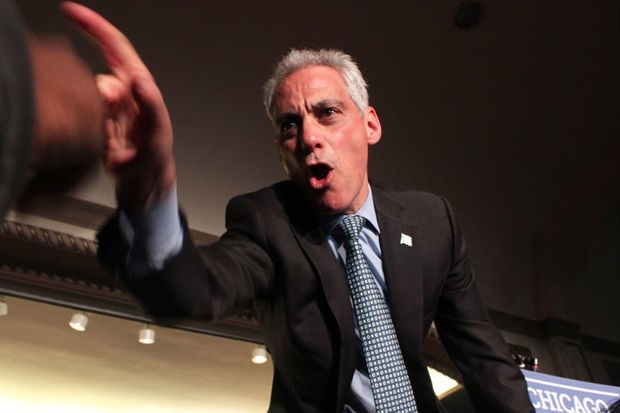Hat tip to Rahm Emmanuel for suggesting a redesign of high school’s junior and senior year as per this Politico op-ed. His thinking is in-line with one of our education ideas developed with the Alliance for Excellent Education, but different in important ways.
Rahm (I call him by his first name, because he seems like a super-relaxed kind of guy who doesn’t demand respectful titles from folks he barely knows) made two high school to higher ed suggestions to speed time-to-degree and thereby increase college affordability.

First, Rahm suggested high schools that so choose should convert “a huge slice” of 11th and 12th grade curricula into that which currently constitutes the freshman and sophomore year of college. He’d do it through expansion of AP and dual enrollment opportunities.
Second, Rahm thinks “higher ed should pull students up” and out of high school by promising a free year of community college tuition, books, and transportation for those who achieve a “B” average.
Rahm says a high school curricula change will enable students to complete college faster and learn before full college entry that they can handle credit-bearing college level work. Presumably, he also believes a free year of community college tuition for those with a “B” average or higher will increase student motivation in high school and lead to higher levels of college completion.
Good for Rahm. We should rethink high school and work to speed time-to-degree. It’s a smart way to reduce the cost of college.
We see red flags, though. First, Rahm’s plan — as articulated in his Politico op-ed — would change 11th and 12th grade curricula for all students – regardless of academic preparation or prior performance. Doing so absent supplemental support sets up many students to fail.
Second, while we like dual enrollment in concept and operation in many circumstances, we recognize the research on it is mixed. Our biggest concern though with the current operation of dual enrollment programs, although not particular to them, is credit transfer. Over 40 percent of credits are lost when students attempt to transfer (percentages vary by types of schools involved). A federal initiative that ramps up dual enrollment without addressing the credit transfer issue risks being highly inefficient.
As for Rahm’s free community college tuition proposal, it follows an idea our staff first suggested back in 2009. We’ve since recognized the importance of going the next step — covering all college costs, not just tuition and fees, at all two and four-year public colleges — a step that every city and state college promise program should take.
The research indicates a student capable of attending a four-year school who instead chooses to enroll in a community college is 30 percentage points less likely to earn a degree than if they began at a four-year college in the first place. Why? They’re less likely to be surrounded by highly-motivated peers, suffer from a comparative lack of support services available at better resourced four-year colleges, and lose a high percentage of credits when transferring.
Over 80 percent of community college students enter school saying they aspire to a bachelor’s degree. Only 14 percent succeed.
The folks who complete the community college to four-year college to bachelor’s degree path deserve heaps of respect and praise. We should strive to drive the percentage of those who succeed higher. But it’s unwise to drive more students toward that path as a strategy to heightened degree completion absent other significant changes.
So-called free college shouldn’t be done on the cheap.
# # #